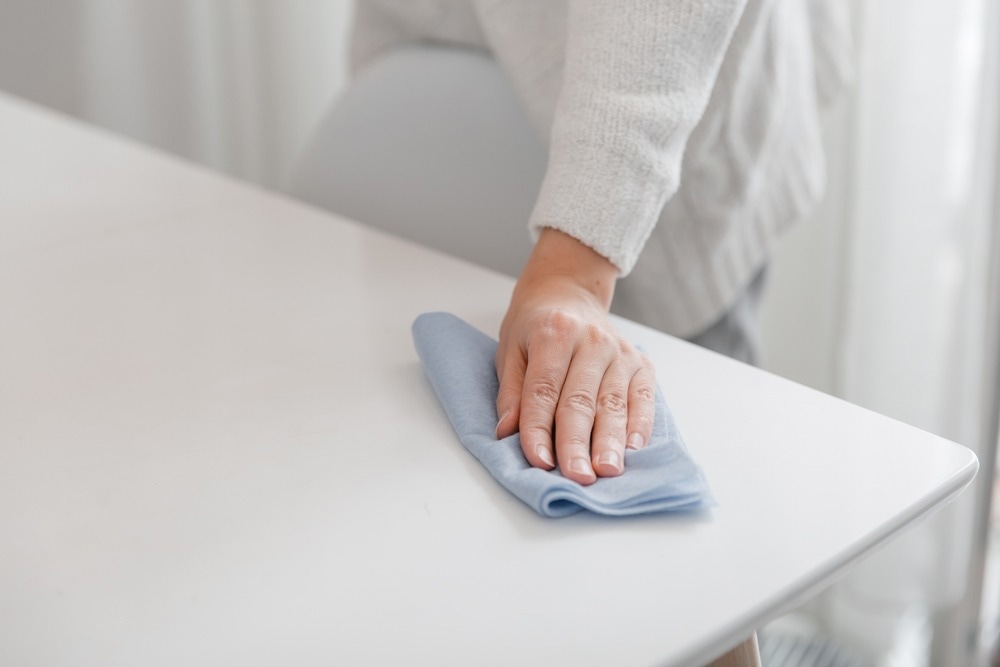The recent outbreak of monkeypox infection in numerous non-endemic countries has led to over 48,000 infections to date. In light of the ongoing coronavirus disease 2019 (COVID-19) pandemic, the threat posed by the rapid increase in monkeypox cases has been alarming.
The mode of transmission of the monkeypox virus has been under scrutiny, as most cases in the current outbreak have almost exclusively been detected among men who have sex with men (MSM).
A recent Morbidity and Mortality Weekly Report conducted by the United States Centers for Disease Control and Prevention (CDC) describes how the monkeypox virus spreads on household surfaces.

Study: High-Contact Object and Surface Contamination in a Household of Persons with Monkeypox Virus Infection — Utah, June 2022. Image Credit: ml_photo / Shutterstock.com
Introduction
The monkeypox virus is a member of the Orthopoxvirus family and is related to the smallpox virus.
Typically, this virus spreads through direct personal contact with an infected individual, animal, or fomites contaminated with respiratory, sexual, or other bodily secretions. Some potential sources of fomite contaminants could include bedding, clothing, and other items used by infected individuals.
About the study
The current study is based on the investigation of a home shared by two monkeypox cases in Salt Lake City, Utah in the United States.
The two patients were confirmed to have monkeypox infection by polymerase chain reaction (PCR) assay. Both had a history of travel and had no other housemates.
Both patients experienced prodromal symptoms of fatigue and muscle aches, with Patient B experiencing these symptoms eight days following the illness onset of Patient A. Patient A also developed penile lesions eight days following the initial symptoms, which later progressed over the lips, hands, legs, torso, and scalp two days later.
In Patient B, lesions first appeared on the foot and subsequently spread to the leg and finger. Both patients had a limited number of lesions that resembled ulcers, pimples, or the typical centrally pitted well-defined lesions.
Both patients isolated at home for 20 days. The illness resolved spontaneously within three to four weeks in both cases.
The Utah Department of Health and Human Services (UDHHS) conducted a thorough investigation of their home, wherein they swabbed multiple surfaces and objects that were identified as being frequently touched. The researchers also inquired about the methods used to clean and disinfect the home, as well as which parts of the home were used heavily during the period of illness.
A total of 30 objects from nine areas of the home were sampled and shipped to the CDC for testing. At the CDC, these samples were tested using PCR for the presence of both broad non-smallpox Orthopoxvirus and specific West African monkeypox viruses. If the samples tested positive by PCR, they were sent for virus culture.
Study findings
The patients said that they took one or two showers a day, washed or sanitized their hands about 10 times a day, as well as washed bed linens and clothing once a week. They reported cleaning surfaces and mopping floors using a cleaning spray that was not listed as a disinfectant suitable for use against emerging viral pathogens.
Of the 30 samples, 70% were PCR-positive. More specifically, 100% of positive samples were from porous items like cloth, about 70% from non-porous surfaces, and 50% from objects with both types of surfaces. This indicates a high level of contamination of the household environment.
Culturable virus was not obtained from any sample. This apparent viral inactivation suggests that the virus becomes non-viable, either over time or following exposure to environmental or chemical disinfectant factors, especially because the patients reported cleaning and disinfection of surfaces within the home.
Implications
The small size of the current study limits the broad generalizability of the findings. However, it appears that indirect transmission of monkeypox virus in the household environment through fomites is unlikely or, at best, uncommon.
Nevertheless, a greater number of participants would be needed to further investigate the infective potential of environmental surfaces in contact with monkeypox patients.
“[Until such studies are available], appropriate precautions against indirect exposure and transmission [including] wearing a well-fitting mask, avoiding touching possibly contaminated surfaces, maintaining appropriate hand hygiene, avoiding sharing eating utensils, clothing, bedding, or towels, and following home disinfection recommendations.”
Journal reference:
- Pfeiffer, J. A., Collingwood, A., Rider, L. E., et al. (2022). High-Contact Object and Surface Contamination in a Household of Persons with Monkeypox Virus Infection — Utah, June 2022. Morbidity and Mortality Weekly Report Early Release. doi:10.15585/mmwr.mm7134e1.